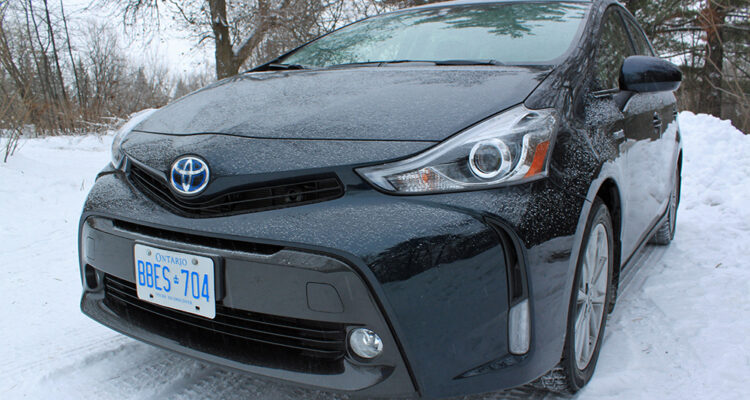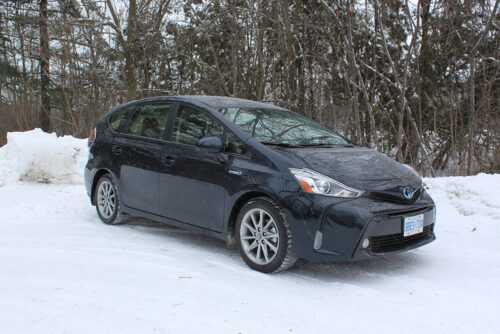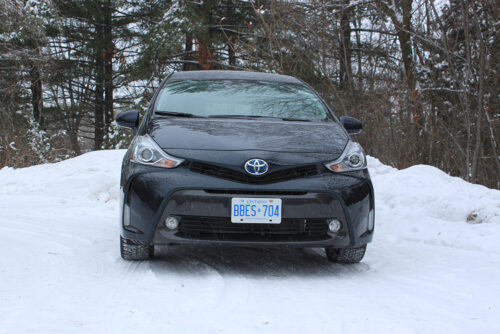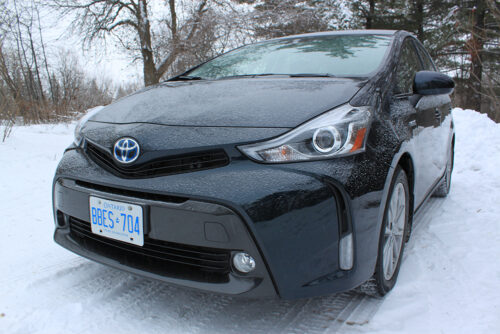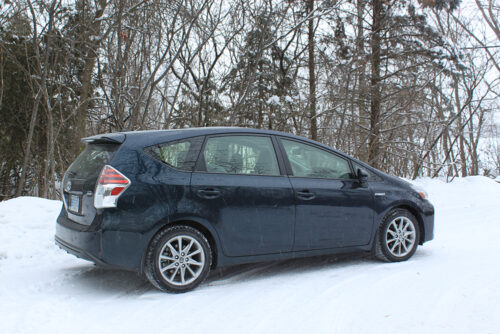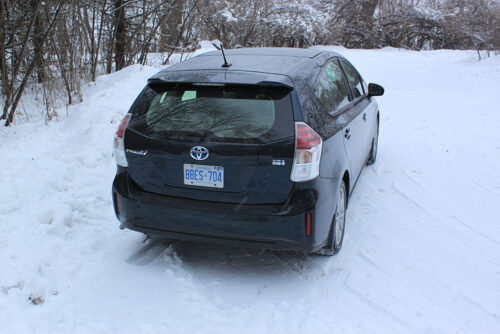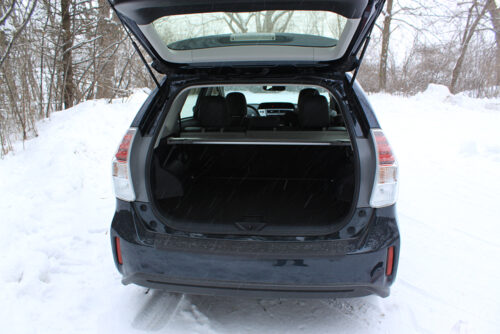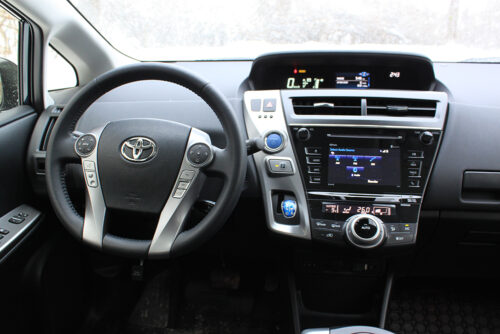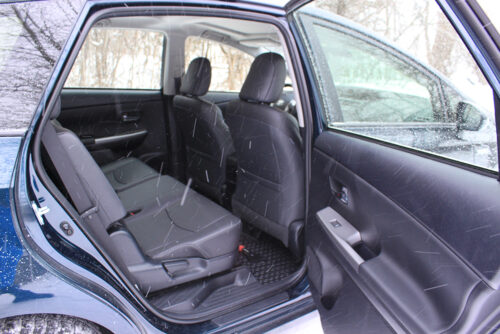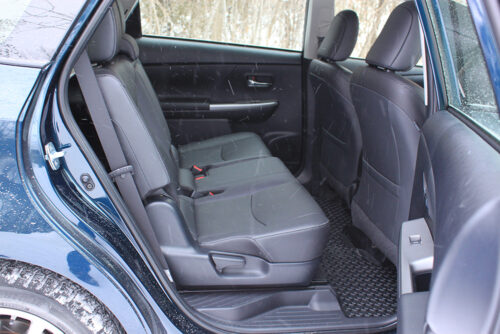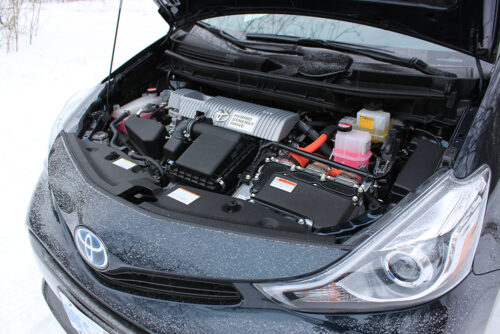Toyota calls the 2017 Prius v a hybrid crossover, but I will have to respectfully disagree.
Unlike the Rav4 hybrid – which is a crossover – the Prius v is more like a wagon with crossover aspirations.
And with an extra 274 litres of cargo space compared with the Prius, the v delivers on those ambitions but fell short in one key area that is crucial to a hybrid during my time with it.
The Prius V starts at $28,875, but that increases in a hurry if you opt for the $5,985 technology package, which brought the tester’s price to $36,678.47.
Granted, the package adds some sought-after features like alloy wheels, navigation, pre-collision warning, dynamic radar cruise control, a lightweight resin sunroof, LED headlamps and more.
Thankfully, depending on where you live, government grants for buying a hybrid will help reduce that sticker price.
Under the hood of the Prius v is a 1.8-litre four-cylinder engine combined with hybrid synergy drive, and it is paired with a continuously variable transmission (CVT).
The system delivers a net of 136 horsepower (98 hp from the engine) and 105 lb-ft of torque.
It’s a seamless transition no matter which power source the Prius calls upon – the gasoline engine, electricity or a pairing of the two.
And the Prius also features regenerative braking to recapture energy and send it to the batteries.
If you are using the engine, it will shut off when you get to a stoplight to help conserve fuel.
The driving mode can be left in its default setting, or placed into Eco mode – which tames performance – or Power mode, which does the opposite.
The hybrid system delivers fuel economy rated at 5.5 litres per 100 kilometres in the city and 6.0/100 km on the highway, for a combined 5.8 l/100 km.
A week of driving the Prius v during some bitterly cold weather resulted in a rather disappointing average of 7.9 l/100 km by my own calculations, despite the on-board computer telling me my trip resulted in a 6.4 l/100 km average.
In the past, hybrids would often stand out like a sore thumb against more traditional vehicles.
But that isn’t the case so much anymore.
The Prius v is no exception – at least on the outside.
Other than the badging, there is nothing about the Prius v that screams hybrid.
However, unlike its Prius and Prius Prime siblings, the design remains the same as the 2016 model despite updates to the other two.
Inside, however, is a little off the beaten path from what most consumers are used to.
For starters, there’s the miniature shift knob – but don’t look for a P position. You need to press a button for that.
The gauge cluster is centred in the cabin rather than being behind the steering wheel, which takes some getting used to if you are accustomed to looking down to know your speed or other information.
Other than that, however, most of the rest of the interior is pretty standard fare.
There’s a large armrest between the two front seats but, oddly, only one cup holder. The one for the passenger pops out below the air vent near the door.
The cabin is pretty spacious and comfortable, with good legroom for the rear occupants. And the panoramic sunroof makes sure the compartment is bathed in natural light. However, the glass panel is fixed, so you won’t be able to open it for any fresh air.
With the gauge cluster now centred in the dashboard, the benefit is that all your information and controls are concentrated in one place.
But I am not really a fan of this setup.
The ventilation controls also take some getting used to since there’s a single dial used to control several functions.
In between the gauges and the HVAC controls is the upgraded infotainment system that also comes with the technology package.
That means it comes with built-in satellite radio and navigation on top of the base system with six speakers.
From connecting your phone via Bluetooth to all other facets of operation, it’s a fairly logical and no-nonsense system.
The same can be said about driving the Prius v since it’s on the bland side – and there’s nothing wrong with that for a hybrid.
There’s very little difference between driving this hybrid and a gasoline-only vehicle, but one should definitely adjust driving habits in order to maximize the reward.
Hard acceleration in a Prius v defeats the benefit of driving a hybrid, so it takes time to adjust to a new style if that is what you have been doing for years behind the wheel.
It also takes some time to get accustomed to the feel of the regenerative braking.
On the road, the cabin is a somewhat noisy environment – especially with wind noise at high speeds.
Given that the other two Prius models have been given a new look, and that the Rav4 is already in the crossover slot, you have to wonder about the Prius V’s future.
So if you like the wagon look in a hybrid, now might be the time to snap one up.
2017 Toyota Prius v
Price as tested: $36,678.47
Freight: $1,690
Configuration: Front-engine /front-wheel drive
Engine/transmission: 1.8-litre four-cylinder engine with hybrid synergy drive / Continuously Variable Transmission
Power/torque: 136 horsepower (net power)/ 105 lb-ft
Fuel (capacity): Regular (43 L)
Combined fuel economy ratings (L/100 km): 5.8 L/100 km
Warranties: 3-years/60,000 kilometres (basic)
Competitors: Ford C-Max, Hyundai Sonata Hybrid, Chevrolet Volt
Related links:
Toyota Canada
Doubleclutch.ca



